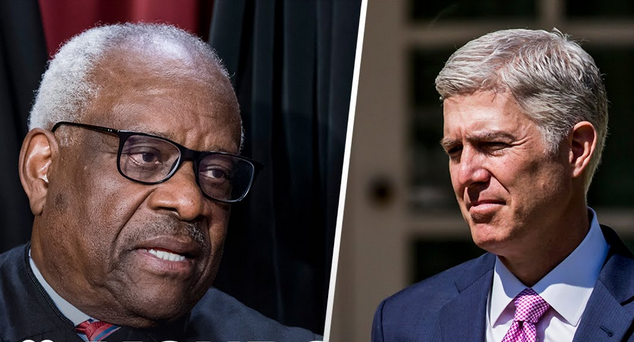Photos: Common Cause\YouTube Screenshots
ProPublica reported last week that in 2008, Justice Samuel Alito took part in a luxury fishing trip to Alaska paid for by hedge fund CEO and billionaire Paul Singer, a prominent GOP donor whose company has repeatedly had cases come before the Supreme Court in the years that followed. Alito neither reported the trip nor recused himself from hearing the cases. It’s one of a growing number of ethics scandals by Supreme Court justices.

These examples underscore the need for a Supreme Court code of ethics, but they also highlight a broader disconnect between the justices and the public. The most charitable reading of recent scandals is that many justices have come to experience cozy relationships with billionaires and power brokers as normal. It’s part of sitting in an elite and unaccountable bubble for decades — and it’s not good for our democracy.
It’s one of many reasons why we should adopt a system of term limits and regular appointments for justices.
Justices today stay on the bench more than a decade longer than they used to on average. Today, a 30-year-old has seen 10 new justices join the Court over their lifetime. Sixty years ago, a person of the same age would have seen twice as many. Justices themselves routinely time their retirements so that their replacement has a similar ideological orientation, further taking the direction of the Court out of the hands of the American public. All together, it’s a gobsmacking amount of power given to a small number of individuals to shape the law for decades.
The arbitrary way we fill the Supreme Court bench has also frayed the link between the Supreme Court and public values. Republicans won the popular vote in only two of the last nine presidential elections, yet they’ve appointed six justices, locking in a conservative supermajority on the Court. President Trump appointed three justices in four years, more than Presidents Obama, George W. Bush, and Clinton each appointed in their eight-year terms. President Jimmy Carter didn’t get any Supreme Court appointments at all.
Confidence in the Supreme Court dropped to a 50-year low last year.

Term limits would be a big step toward fixing this problem. With a term limits system, justices would sit in active service for 18 years. At that point, they would automatically become “senior” justices, where they would hear cases on the lower federal courts, assist with judicial administration, and step in to hear Supreme Court cases when there is a recusal or unexpected vacancy.
A similar senior judge system has been in place for lower court judges for more than a century and has applied to the justices since 1937. Justice David Souter, for one, took senior judge status in 2009 and has heard cases on the First Circuit. The key difference is that under this reform, Congress would set the schedule for senior status, rather than leaving the timing up to the justices themselves.
Creating an 18-year schedule would align the justices’ service much closer to historical averages and create more opportunities for new voices on the Court, to reflect the evolving views and composition of the American public. A stable, recurrent appointment process would discourage partisan gamesmanship in judicial confirmation. It would protect judicial independence.
Throughout the justices’ active and senior phases, they would continue to serve as judges, enjoying job and salary security as required by the Constitution. The timing of senior status would apply to all justices equally, unrelated to how they ruled in individual cases.
The other key component of this reform is regularizing Supreme Court appointments. With 18-year terms, new Supreme Court vacancies can be staggered every two years. As a result, each presidential term would correspond with two open seats, equalizing the opportunity to shape the future direction of the Court.
How do we get there? A constitutional amendment is one path, but Congress can also adopt this system by statute. The constitution requires that justices hold their offices during good behavior, and senior justices do exactly that.
Two-thirds of Americans, including 57 percent of Republicans, support term limits for the justices. It’s one of the few big ideas that Americans actually agree on. Chief Justice John Roberts himself spoke in favor of term limits before he ascended to the Court, correctly pointing out that term limits could “ensure that federal judges would not lose all touch with reality through decades of ivory tower existence.”
Congress has broad power to define the Supreme Court’s structure and power, and it has used that power repeatedly throughout U.S. history, including to provide for reduced duties for justices who retire from active service, to require justices to sit on lower courts, and to alter the Court’s size and jurisdiction. It’s time for Congress to restore democratic legitimacy to the Supreme Court by establishing term limits and regular appointments.








